Growing snake plants successfully requires attention to watering habits. In fact, this is the single largest care factor you must learn to grow a healthy snake plant of any variety. Our snake plant watering guide covers everything you need to know about proper hydration of this wonderful indoor plant.
Why is watering snake plants important? Snake plants need to be watered correctly or they will develop disease and rotted roots. This will destroy the plant if it goes on long enough without corrections.
This is true because Sansevieria trifasciata (recently reclassified to dracaena trifasciata) is native to the inhospitable, dry areas of tropical Africa. They can eek out an existence in crevices of rocky terrain with little water for long periods of time. They are a tough plant.
This makes them a wonderful ‘set em and forget em’ indoor plants. Snake plants can mostly take care of themselves. However, Incorrect watering practices cause problems for these dry loving plants. Excess moisture and dense soggy soil quickly smother and rot snake plants roots.
The Mother-in-law’s tongue is well known for hardiness. Snake plants are one of the best plants for beginner plant parents for this reason.
A new plant parent that is just getting the hang of taking care of this living green housemate has some leeway. One to two mistakes in watering will not kill a snake plant. But you need to learn correct watering methods for these plants if you hope to keep them happy.
The purpose of this snake plant watering guide is to teach you proper watering for these succulents. It is THE foundation of snake plant care. Good watering practices is really all these popular houseplants need to give you years and years of green life in your home

Read Our Complete Snake Plant Care Guide for even more on caring for these unique plants.
Of all the points we make in our general care guide on snake plants, none are so important as correct watering. That’s why we created this detailed guide for watering snake plants. We hope to help you have success.
Why watering is Critical for Good Snake Plant Care:
Snake plants are especially sensitive to overwatering. In fact, incorrectly watering this succulent will kill it. Every time.
Snake plants require very little water from you. They are masters of storing moisture. Add more water only when soil is dry down at least 2 to 3 inches. Allow the roots to get pretty dry so the plant is using some stored water occasionally.
Then give them a thorough soaking. The roots will transfer the water and nutrients the plant needs into the rhizomes and leaves and live happily quite a while before needing more water.
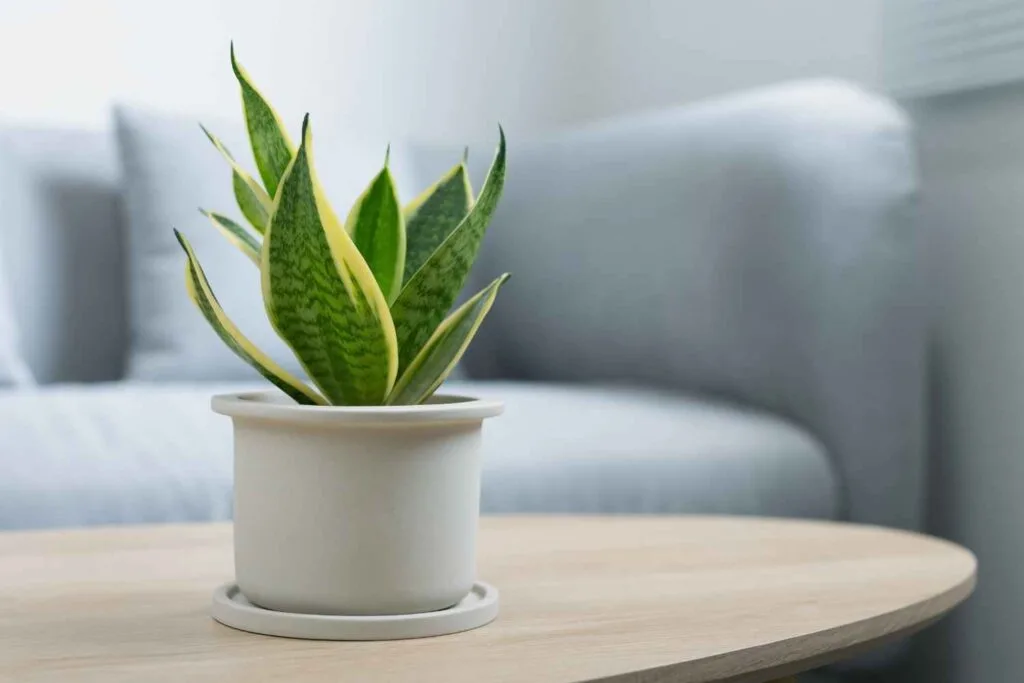
How Often Should Snake Plants Be Watered?
Snake plants can thrive 2 to 8 weeks without water. This may seem like a long time and it is, for a common houseplant. Dracaena trifasciata is uniquely suited to living on the water it stores in it’s thick fleshy leaves and the water storing rhizomes under the soil.
The plant will live wonderfully well with seemingly little water and quite a while between a watering session. Indeed, it is designed to do so.
Snake Plant Watering Schedule:
Snake plant watering schedule is rather loose. Be sure to check the soil every week or so. You’ll learn after a while how long your plant goes before the soil is completely dry.
Snake plants tolerate infrequent watering better than improper watering methods.
How Long Can A Snake Plant Go Without Watering?
- Indoor humidity affects how quickly water evaporates in the soil. Low humidity causes high evaporation.
- Season of the year plays into watering. During the warmer months your plant will use more nutrients and water. As the snake plant goes dormant in winter, less water and nutrients are used by the plant. However, heating systems can dry pots out quickly.
- The types of snake plants and mature plant size can affect the water requirement of a particular plant.
- Soil drainage will impact watering. Heavy soils hold water much longer than porous soil.
- Does the planter drain well? Does it have a plant saucer under it ?
- Is the plant root bound? Roots that are tightly bound in a pot cannot accept water well. Even frequent watering will not help here.
- Type of soil mix has a large impact on how often your need to water a snake plant.
- Pot size impacts how often you need to water your snake plant. Setting a snake plant in a larger planter than it needs for the root size is dangerous.
How Humidity and Climate affect Watering:
Your local climate affects how your snake plant grows and uses the moisture you give it. Snake plants are not picky about humidity. However, the humidity level impacts how fast soil dries out.
- In lower humidity conditions your snake plant will require watering more often.
- The soil may develop a hard crust on it due to constantly dry conditions. This makes your soil hydrophobic. In this case, water goes around the sides of the pot since it cannot penetrate the crusty dry soil. The plant roots stay dry in hydrophobic soil. TIP: Make holes in the crust so water can get into the root zone if necessary.
- Snake Plants don’t appreciate misting. These low humidity plants don’t need more water on their leaves. But they will enjoy an occasional leaf washing to keep the dust off.
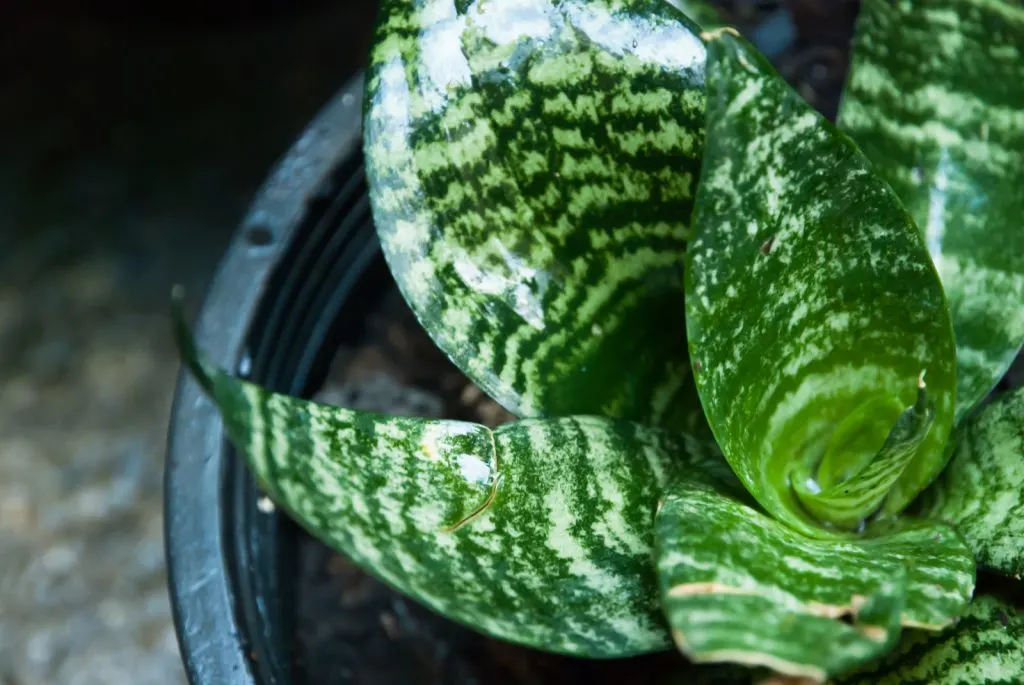
How Do you Know When a Snake Plant Needs Water?
What signs does a snake plant give that it needs water? Well hydrated and Healthy Snake plants have thick strong leaves, designed to hold water well. The leaves will be firm, thick, shiny and have good color when well hydrated.
Even after the soil is completely dry a snake plant will draw on its internal moisture reserves before it shows significant distress. Look at your plant. Is it healthy with good growth?
It needs hydrating when the soil is dry to the bottom of the root zone. Your doing great!
How To Tell When A Snake Plant Is Dry:
To determine when to water your snake plant do a soil test with your finger or use a moisture meter. To do a finger test, push your finger down into the soil until it come up with soil attached. That clinging soil is moist. Be sure the soil is well dry before adding water to a snake plant pot.
Do NOT water a snake plant if the surface of the soil is dry. Water when the roots are dry.
How Much Water Does a Snake Plant Need?
Snake plants use very little water compared to other houseplants. These succulents need to dry out and then be well hydrated. Pour in the amount of water needed to run through the planter and out onto the drain plate.
Then, Let it drain completely. Dump out any excess moisture left in the bottom plate.Let the soil dry completely before watering again.
What Does A snake Plant Look Like When Overwatered?
Signs of overwatering a snake plant Include Droopy leaves, or fading and Yellowing leaves. leaves may also wilt and feel spongy or mushy.
Overwatering is one of the 7 main causes of yellowing leaves in plants. Frequent watering session will sicken this succulent plant.
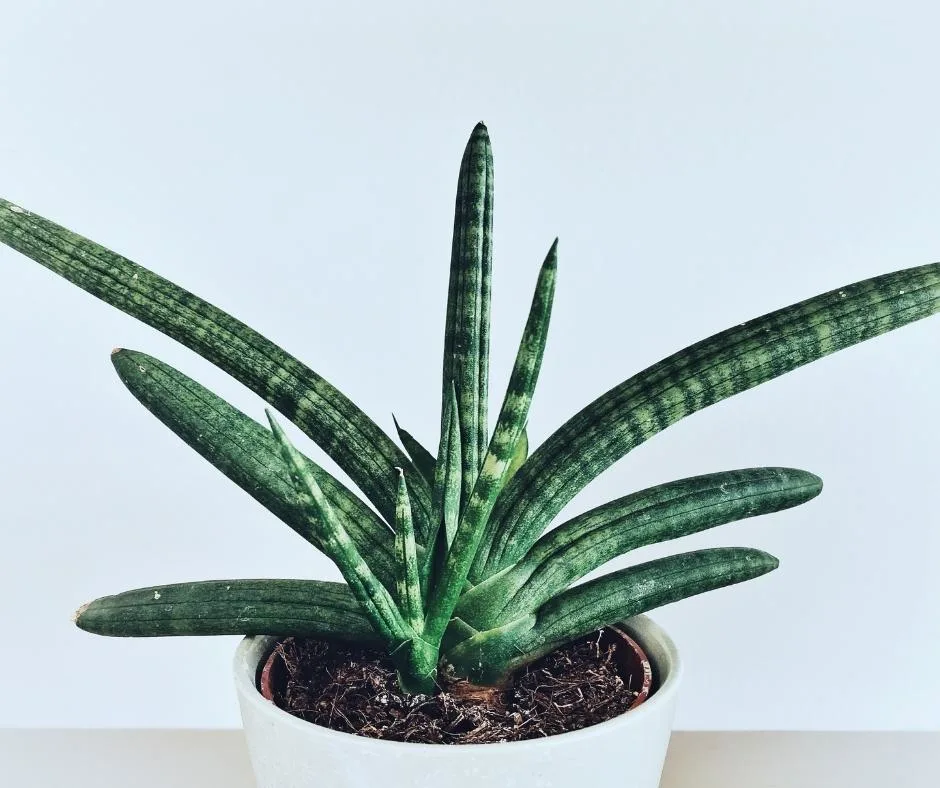
If you over water Saint George’s Sword with frequent sips of water, it cannot dry out. Dense heavy rich soils that trap moisture will also cause trouble for snake plants., the soil will hold too much moisture around the roots for way too long.
This causes the roots to be smothered. They will die if this goes on long term.
Watering stress contributes to poor top growth, root rot and infestations of pests. Spider mites and mealy bugs are the two plant pests most likely to set up house on a stressed out sansevieria.
Root Rot in Snake Plants.
Overwatering is the biggest cause of (Dracaena trifasciatas) Mother-in-law’s Tongue death and disease. Root rot is common in these plants.
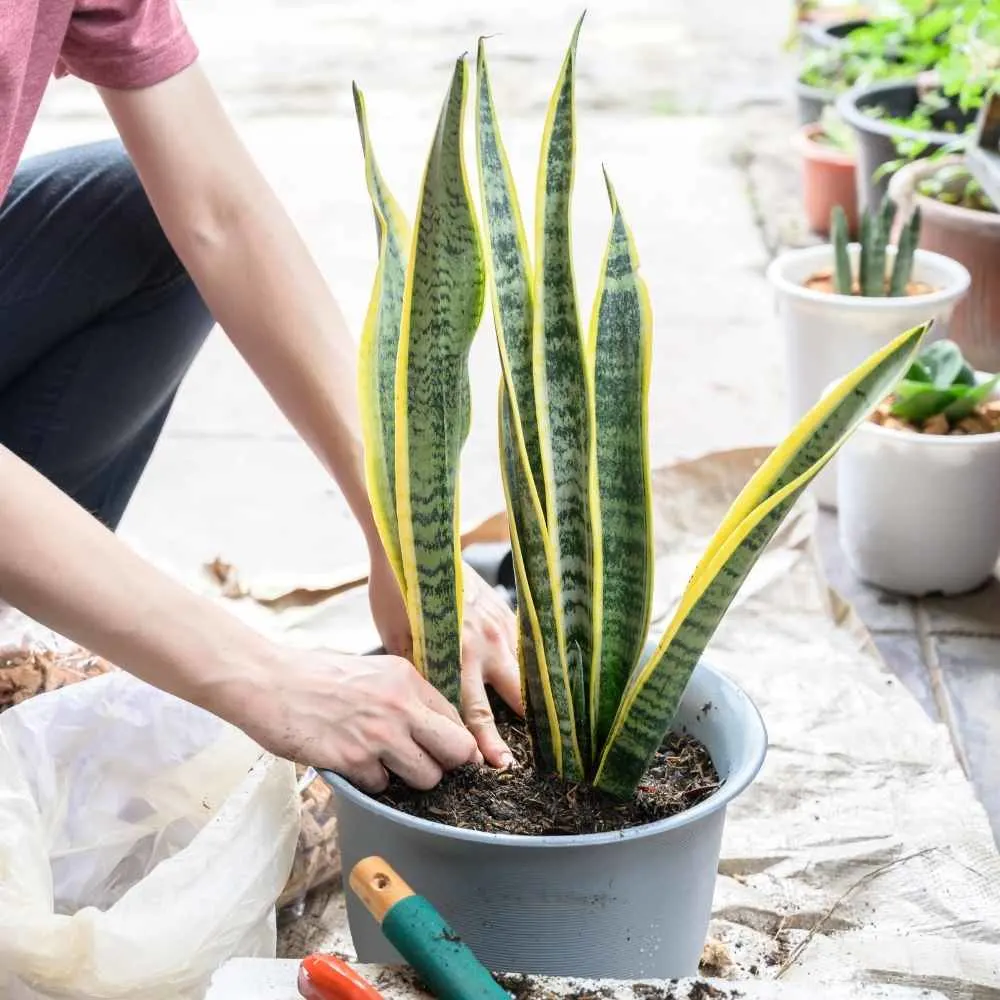
f you unpot your snake plant and examine the roots you will know for sure if it has root rot.
Rotted roots are dark brown and mushy. The root ball may smell and all or part of it may fall off the root ball and top growth.
Alternatively, The top growth may fall over if the root crown rots off. At this point you can try a healthy leaf cutting. Put the leaf cutting in a new pot with fresh soil and see if it can grow roots.
If your snake plant has yellowing, drooping, spongy leaves. It probably has root rot. We show you how to fix root rot in this post.
Why Deep Watering Snake Plants is a Good Idea:
Deep watering allows plant roots to grow down into the soil and spread throughout the soil. Deep watering encourages roots to grow through the soil and develops a healthy plant.
Long breaks between waterings and deep watering combined are best for snake plants. This allows the roots to feed but the soil can dry before another deep watering session. This keeps the roots healthy
Methods for Deep Watering Snake Plants:
Snake plants are not fussy about how you water them. Just remember to keep the crown and leaves dry after you are done. With that in mind, All of these methods can be used to hydrate a snake plant. Choose whichever method works best for you.
And it’s ok to do both top and bottom watering as needed.
Top Watering:
Snake Plants can be watered from the top of the pot. However, Here are some things to keep in mind.
- Snake plants grow from leaf rosettes. This means the leaves are tightly curled at the base of the plant top. When you water from the top, avoid watering straight into the heart of the leaf furls.
- moisture may stand in the leaf crevices and cause rot at the base of the leaves.
- Snake plants grow leaves tightly from the central core of the plant. As they grow Snake Plants fill the pot completely. Top watering must then be done around the outside perimeter of the plant. This can lead to uneven watering to the roots.
- For this reason top watering a snake plant can be difficult.
Bottom Watering.
Bottom watering snake plants is best for the roots and avoids soaking the leaf intersections. They can control the water they absorb when the moisture comes up from the bottom.
Constant bottom watering does have a downside. The soil will eventually build salts in it. So once every other month or so or when the plant looks like it needs refreshing, set pot in a sink and flush it until the water runs out the bottom for a minutes or so. Now the soil is refreshed and you can bottom water again.
With bottom watering you soak the pot from the bottom drain holes or reservoir pot.
- Set your pot in a container larger than the plant pot with water in the bottom.
- Allow the plant to soak up water from the bottom of the planter until the soil is saturated.
- Allow the pot to completely drain. Put the plant saucer under the pot.
- Now set it back on the plant shelf and leave it until it is completely dried.
Self Watering:
Self watering pots are great choices for bottom watering plants. These pots are designed to bottom water. I have several self watering pots and I love them.
LECA Balls are a good substrate for snake plants. LECA is also a self watering system. This allows the plant roots to wick up only the amount of moisture the roots need.
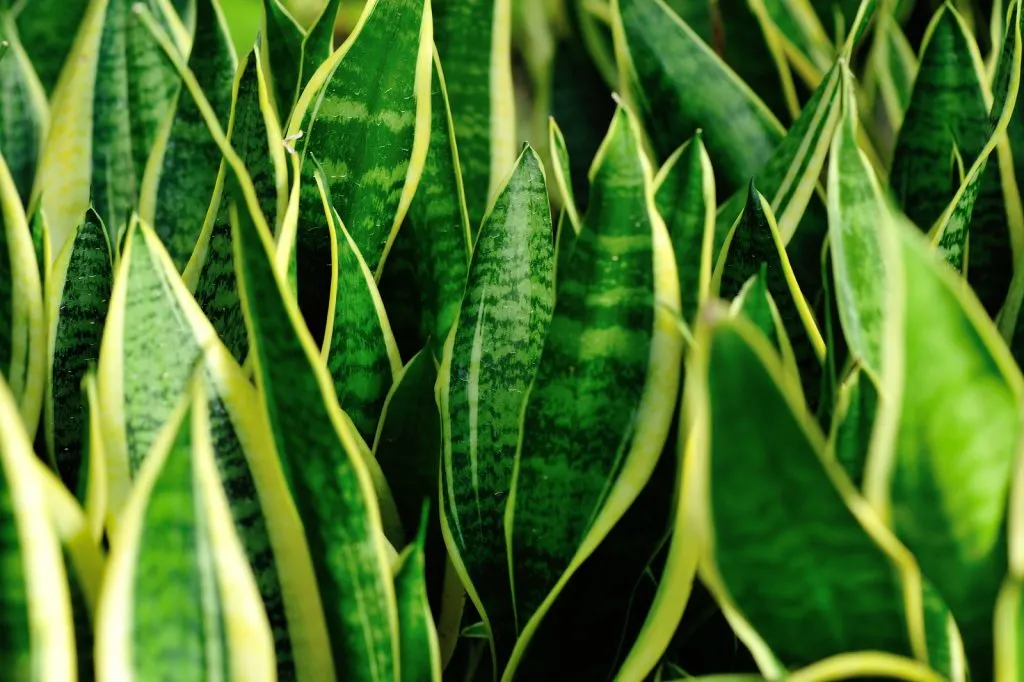
Under Watering A Snake Plant:
If you ignore, or forget, your snake plant for too long, the plant will show signs of stress from underwatering. This is not a common problem for snake plants but it can happen if you leave it without water for a long long time.
What does an under watered Snake Plant look like? The top growth has brown spots and leaves have dry brown dead tips. Curled up, jagged leaf edges or sucked in leaves indicate your leaves are exhausted of moisture.
When a snake plant experiences a lack of moisture for an extended period of time it saves itself if it can. The leaves eventually will dehydrate and fall off if they are not fed. The plant will fall over as the roots die and the crown separates from the leaves.
The plant soil is very dry if the snake plant wiggles when you touch it. If you unpot the snake plant it may fall into pieces since it has dead or dying parts.
To attempt to save it: Remove the dead parts of the plant. Soak the plant with water and see what happens. If there is still life in the rhizome and roots it may come back and grow new top growth.
Be CAREFUL here. If you have a plant with dead roots from under watering: The dead roots will rot. The rotted roots will often cause the plant to die. Just like overwatering. You may need to trim off dead roots and do a repot of the live parts of the plant.
If you do run into root rot. Look at our post on how to fix it.
In Closing:
Snake plants make interesting easy care houseplants. They need little to keep them happy. You just need to follow a few tips like those found in this snake plant watering guide.
Read our guides on best potting soil for snake plants and our post on four ways to propagate your snake plants too.
I hope your questions are answered. If you have more questions, or would like to talk to us, please comment below. We are here to help.
Some Popular Snake Plants:
Read our complete snake plant care guide to learn all the details on how to care for every aspect of your snake plant. Read our post on the best snake plant soil mix and how to propagate snake plants 4 different ways.
Finally, check out our posts on the moonshine and cylindrica. Two very popular snake plants you will enjoy!
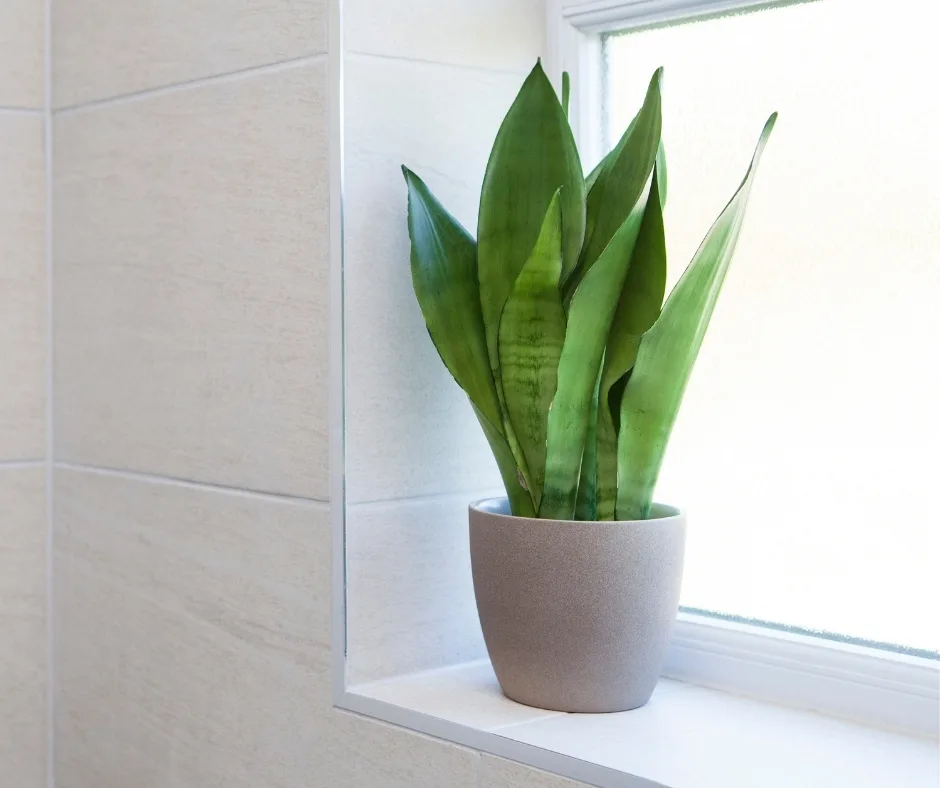
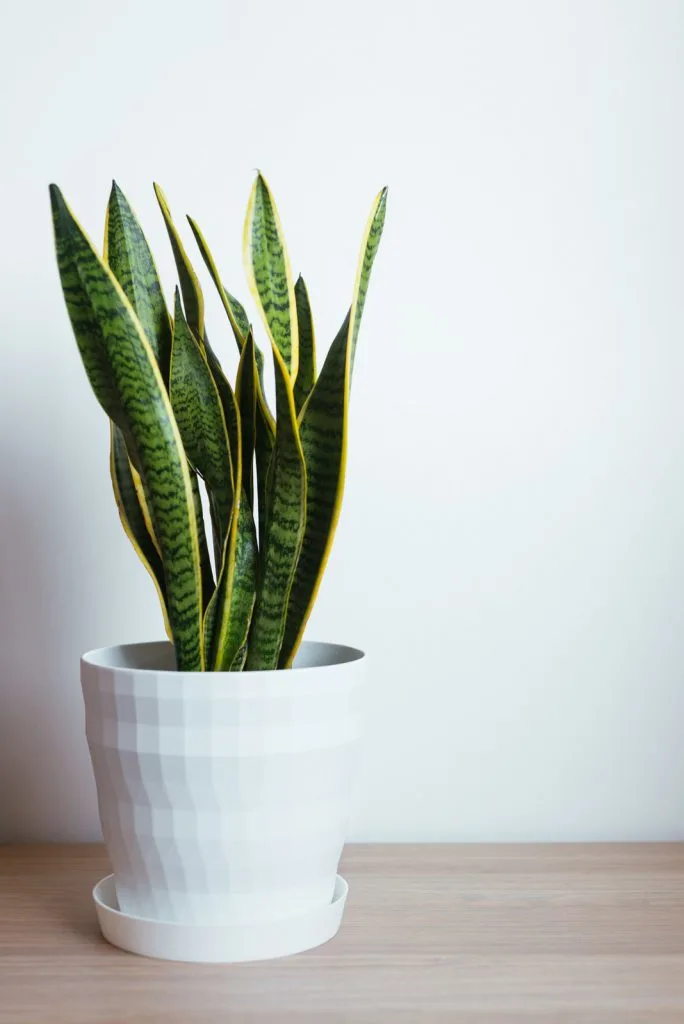
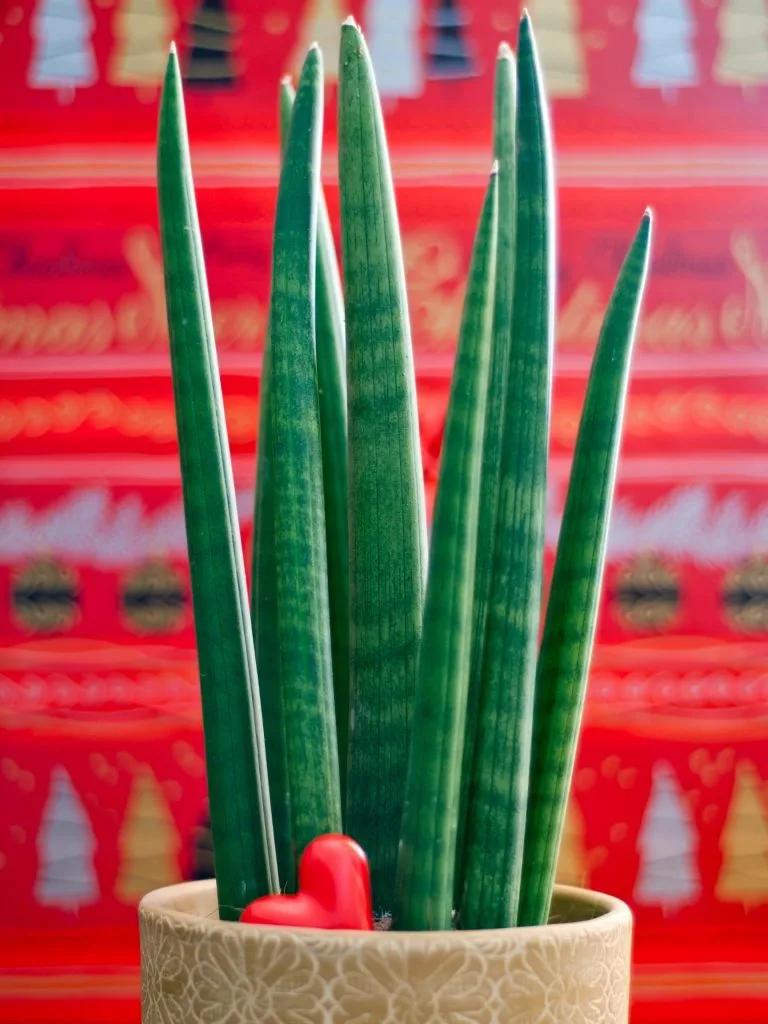
Follow Us:
Find us on YouTube, Instagram , Pinterest and TikTok! We love to Plant chat. We also comment, like and occasionally share your content to our daily stories. We’d love to see your plants. Share your joy in your houseplants. Happy Planting!
Recent Posts:
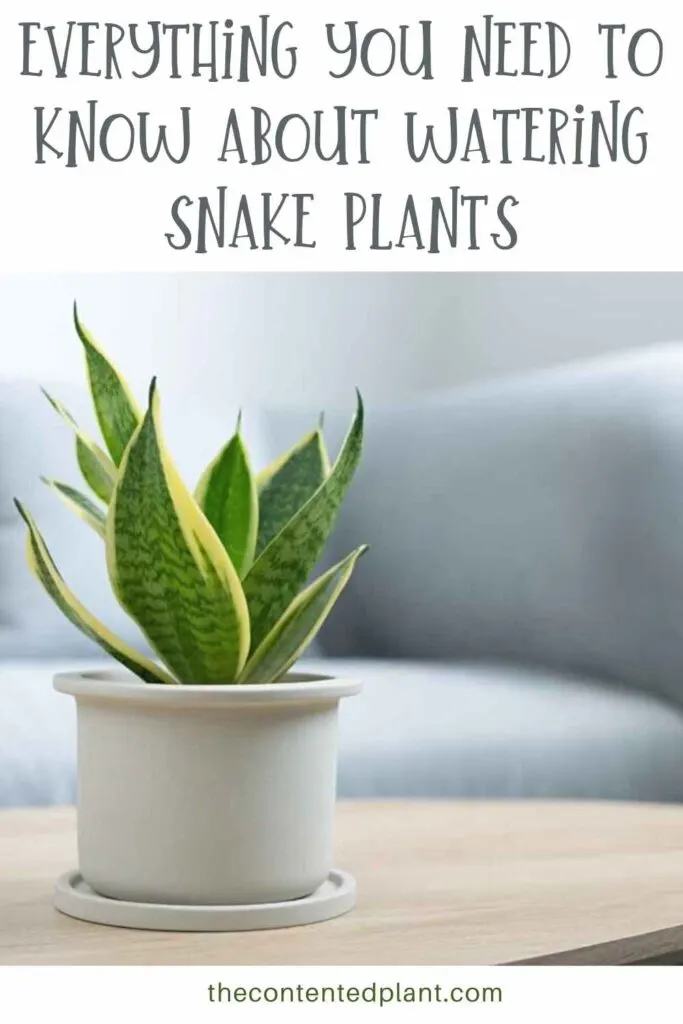

Sansevieria Cylindrica Plant Care Guide and Profile - The Contented Plant
Saturday 23rd of April 2022
[…] Read Our Snake Plant Watering Guide For help with Snake Plant Watering […]
Snake Plant Propagation - The Contented Plant
Tuesday 15th of February 2022
[…] soil Mix for Snake Plants Snake Plant watering guide 7 common plant pests hydrogen peroxide for plants beginner plants You will Love A Guide To […]
The Best Snake Plant Soil Mix - The Contented Plant
Saturday 5th of February 2022
[…] we discuss in depth in our Snake Plant Watering Post, overwatering snake plants is deadly to […]
Best Succulent Soil Mix - The Contented Plant
Wednesday 2nd of February 2022
[…] Snake Plants […]
Watering Plants Properly - The Contented Plant
Saturday 22nd of January 2022
[…] Snake plants Watering frequency can stretch up to 8 weeks. However, Calatheas and other tropicals willful absolutely be dead if you put them on a two month watering schedule. […]